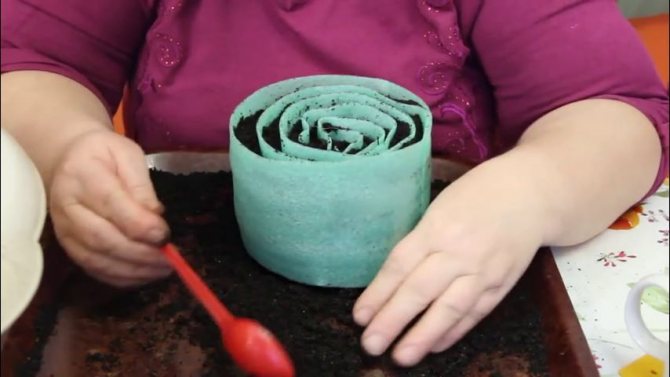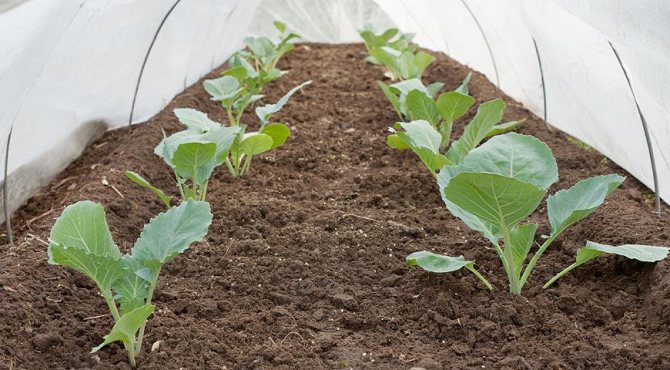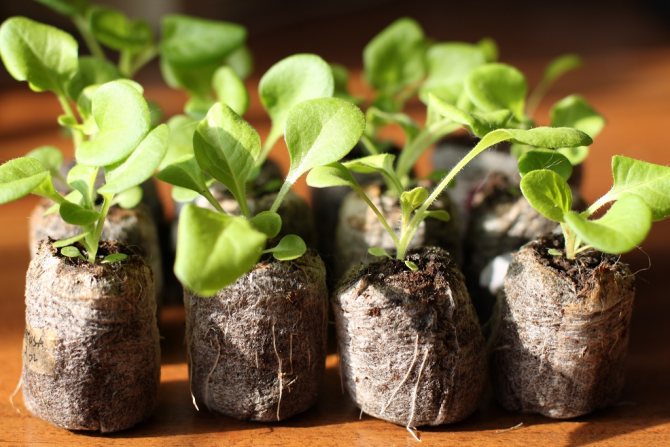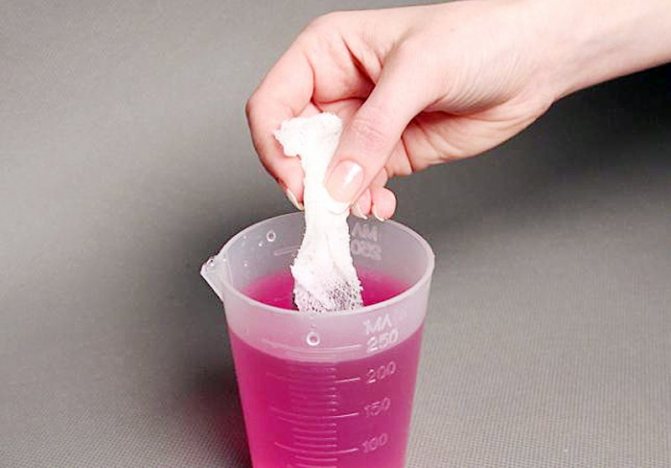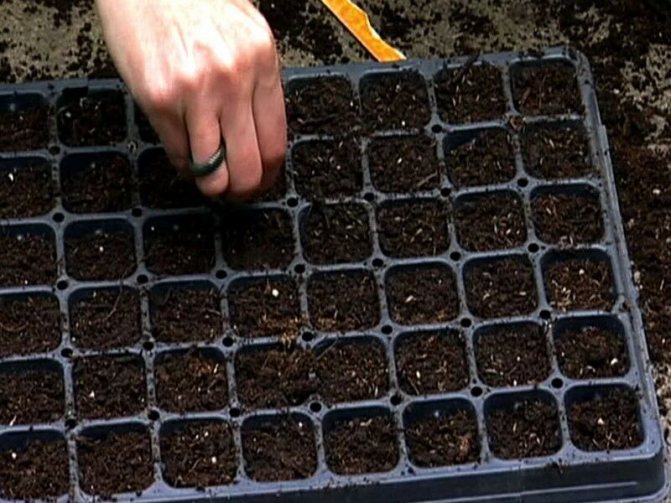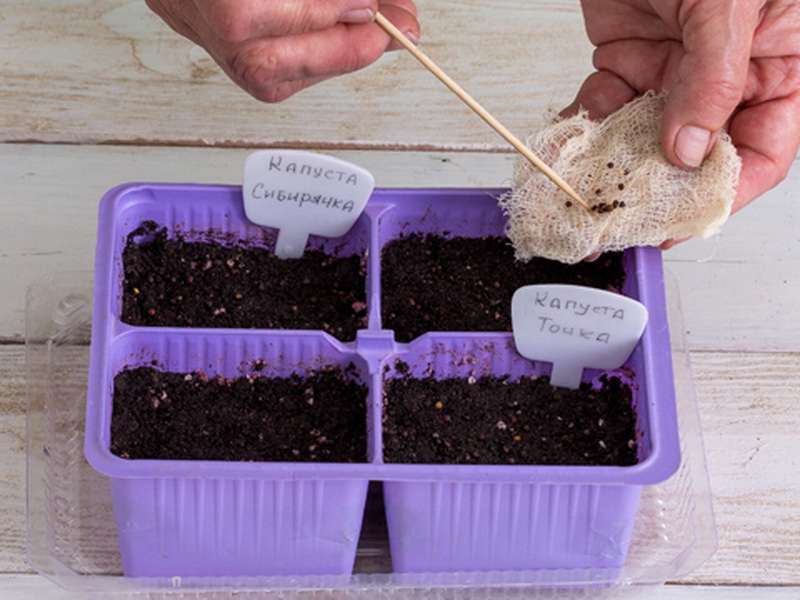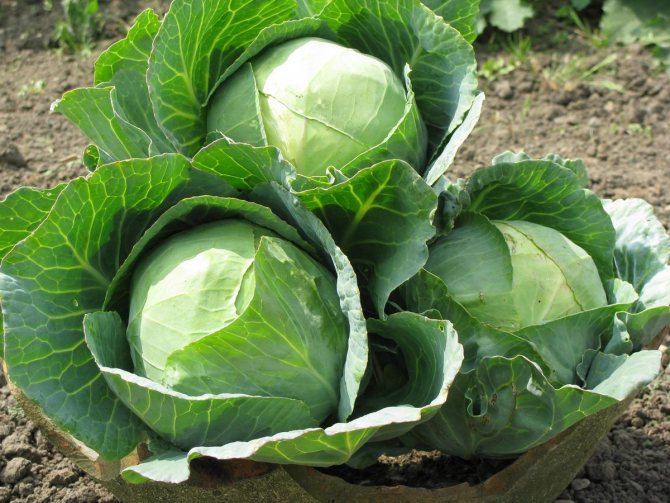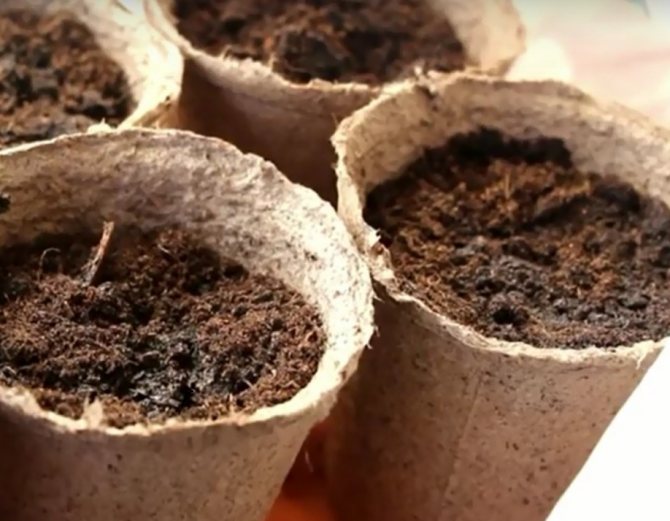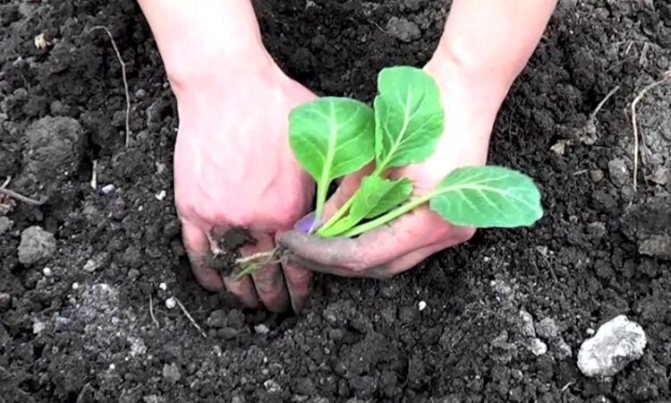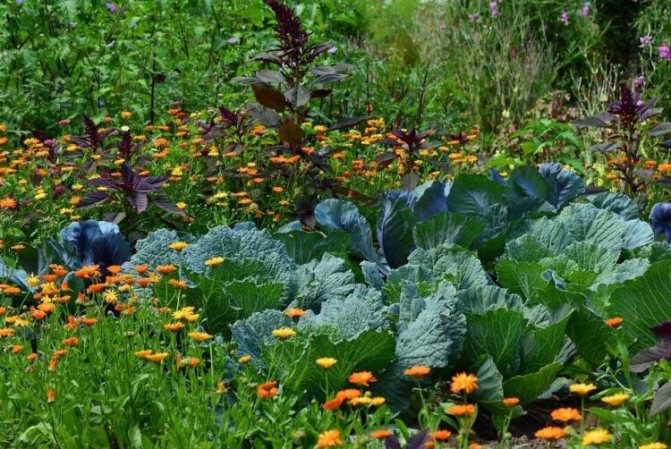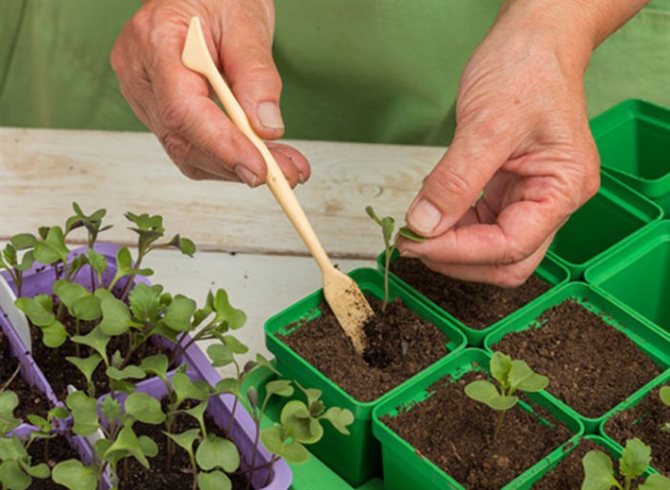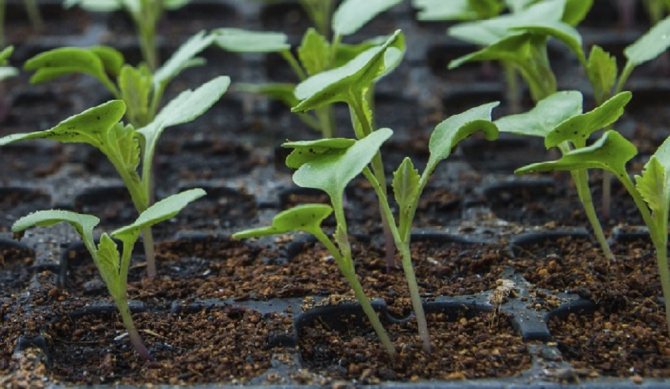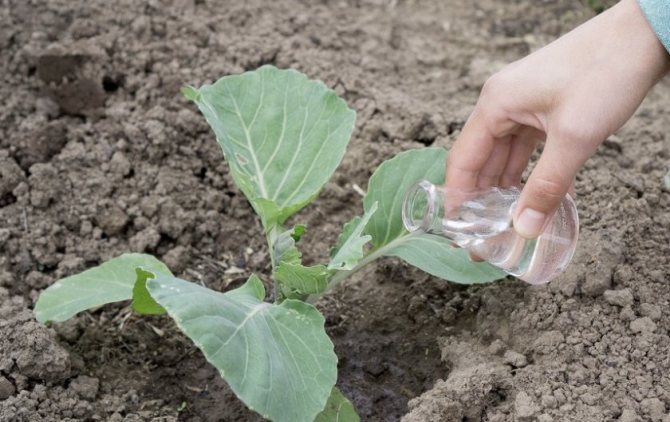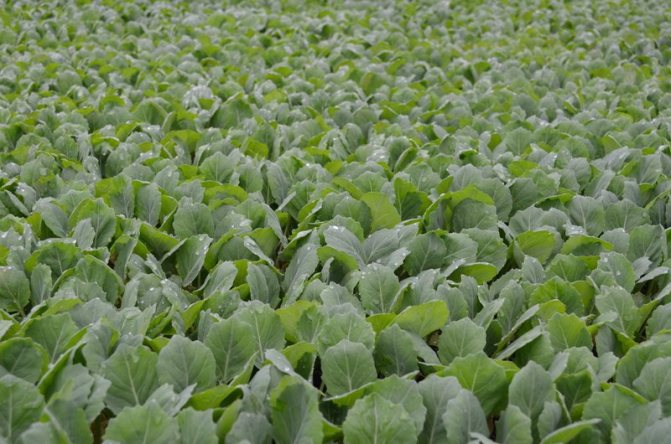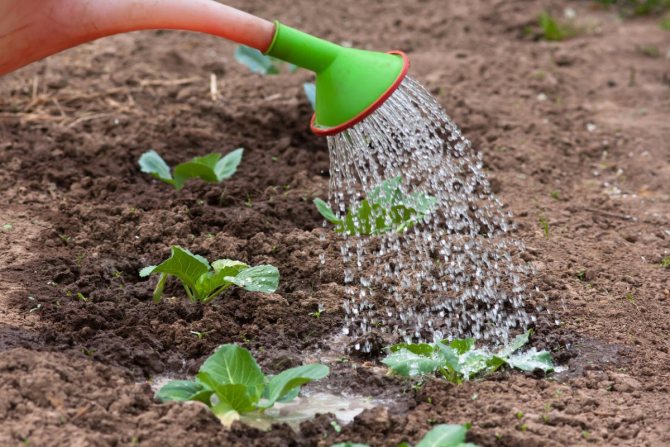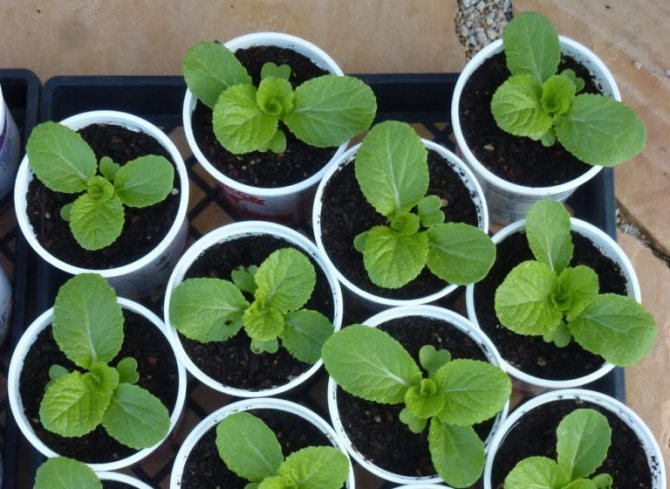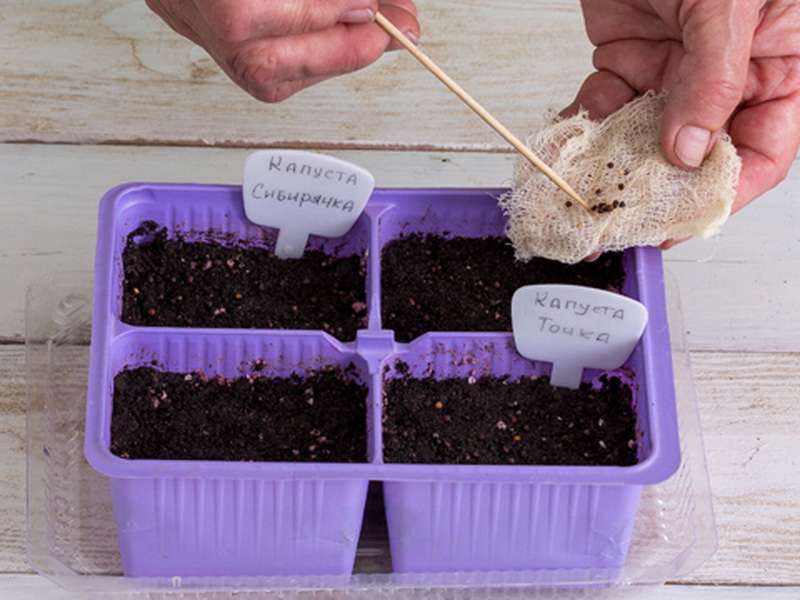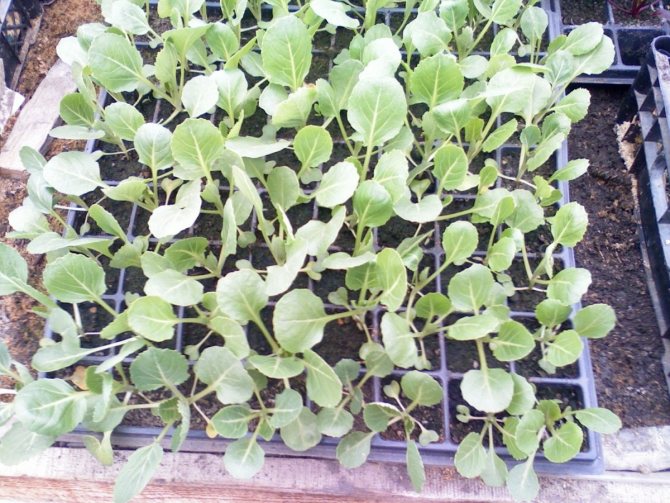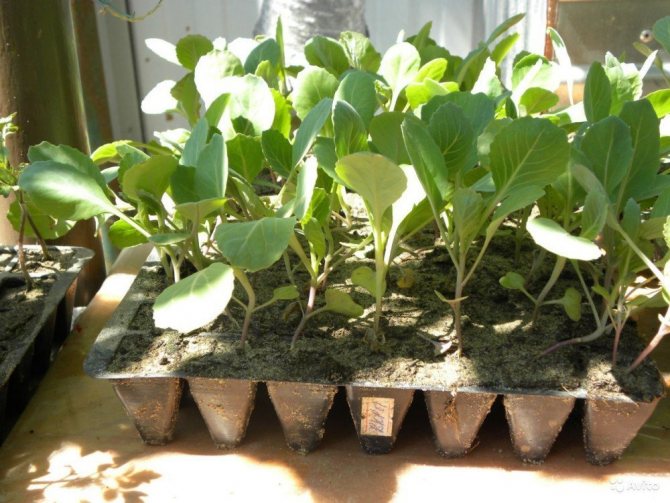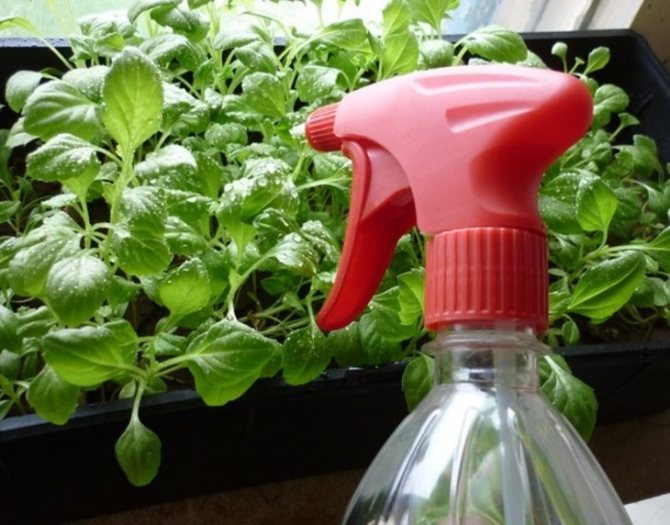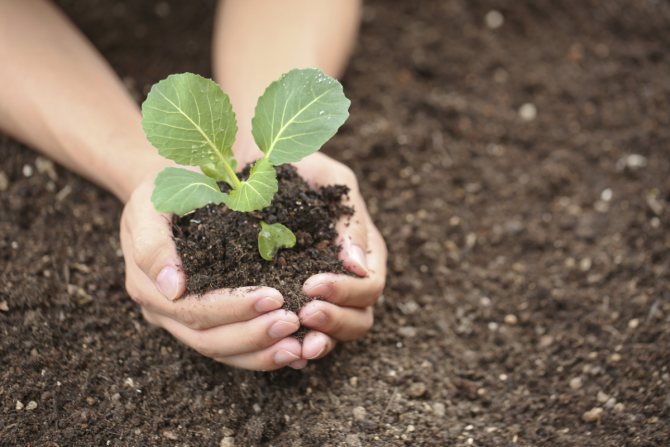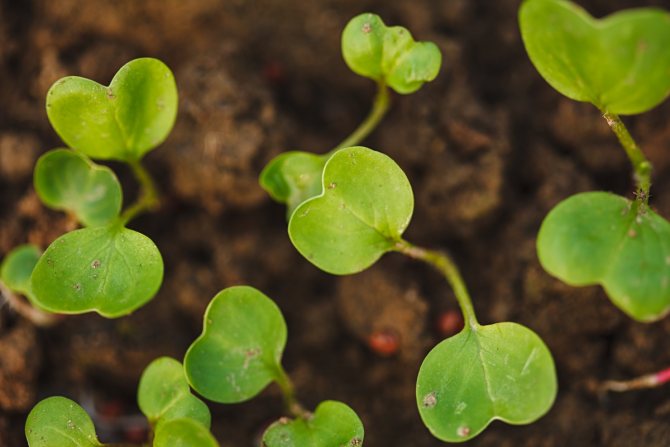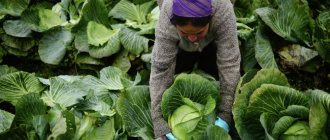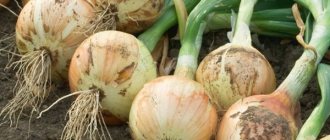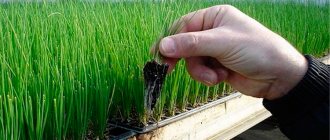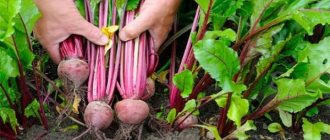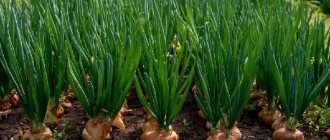Quite a few gardeners plant cabbage on the site in a seedling way. Saplings grown in greenhouse conditions, when planted in open ground, can more easily tolerate difficult weather conditions, attacks from pests, and a lack of nutrients. As a result, significantly higher yields are achieved. Having chosen this planting method, it is important to know when it is best to plant cabbage for seedlings and how to care for it afterwards. For each variety and region, the answer to these questions will be different.
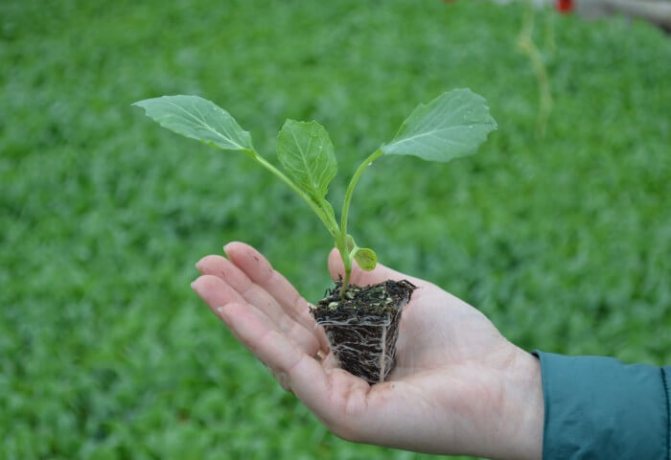
Seedling cabbage
Sowing dates of white cabbage seeds for seedlings
To get strong, healthy seedlings that can be successfully taken in the open field, the gardener needs to determine for himself when to sow cabbage for seedlings. And although almost all white cabbage is maximally adapted to the domestic climate and soil composition, the issue of the timing of sowing seeds remains relevant.
You need to understand that there is no single answer. Sowing time is individual for each specific variety of white cabbage. In addition, the climatic conditions of the region largely affect the timing of planting seeds.
Depending on the variety
Each variety of cabbage assumes its own timing of the appearance of seedlings, the beginning of the ovary, the maturation of the heads. Accordingly, manufacturers of seed indicate such parameters on the packaging of their products.
Depending on the duration of the period from the moment of sowing the seeds to the full maturation of the heads, all white-headed varieties are divided into three types:
- Early. Such vegetables are grown in 90-110 days.
- Average. These varieties fully mature 120–130 days after sowing.
- Late. The full growing season for such crops lasts from 135 to 160 days.
Taking into account the ripening period of a particular variety, the sowing time is also selected. So, for each type of culture, the following seed planting time is characteristic:
- Early. All early varieties are planted between mid-February and early March.
- Average. Such varieties are sown in mid-March - early April.
- Late. These varieties are thermophilic. When seedlings appear early, they can freeze in cold soil. Therefore, they begin to plant it no earlier than from the end of March.
Depending on the climatic conditions of the area
Knowing the climate conditions of the region will help determine when to sow cabbage seeds. Despite the fact that many varieties of cabbage survive the cold without consequences, at the time of planting seedlings, the earth should warm up to at least +5 degrees. In different regions, this warming up occurs at different times. Accordingly, the sowing date should be chosen so that by the time the heat comes, the seedlings are already strong enough.
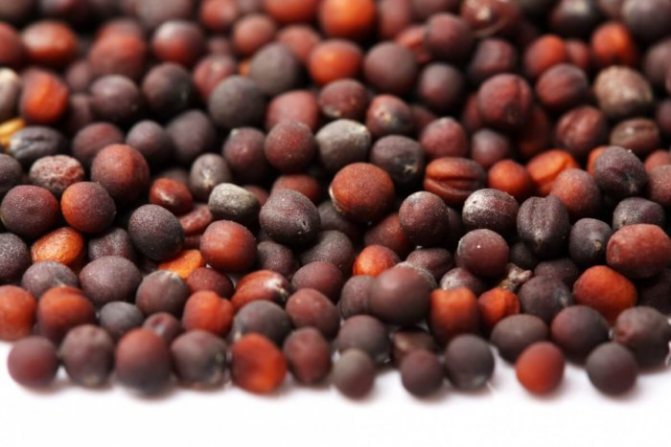

Cabbage seeds
For various belts of Russia, the following terms will be acceptable:
- Siberia and the Urals - from the second week of April to its end (depending on the variety).
- Moscow region - from mid-March (early) to mid-April (late).
- Volga region - from late March to late April.
- Bashkiria and Perm Territory - early varieties are sown at the end of the second week of March.
For Transbaikalia, the timing of planting seedlings falls on early June. Accordingly, the sowing time is selected based on the variety.
Soil preparation principles
Experienced gardeners know that cabbage develops well in loamy soils, there is experience of successfully growing it in fatty chernozems, but it is better if the soil is with a looser structure, not devoid of fertility. Therefore, for growing seedlings, mixtures are prepared independently, combining components in different proportions - humus, compost, peat, fertile soil, etc.
You can choose from one of the following recipes:
- low-lying peat and fertile soil (1: 1);
- fertile soil, low-lying peat, high-quality humus (2: 2: 1);
- humus, rotted sawdust, forest land (6: 2: 1).
It is important that the soil is not contaminated with spores of the fungus Plasmodiophora brassicae, the causative agent of the keel. This is the most dangerous seedling disease in which the roots lose their ability to absorb water.
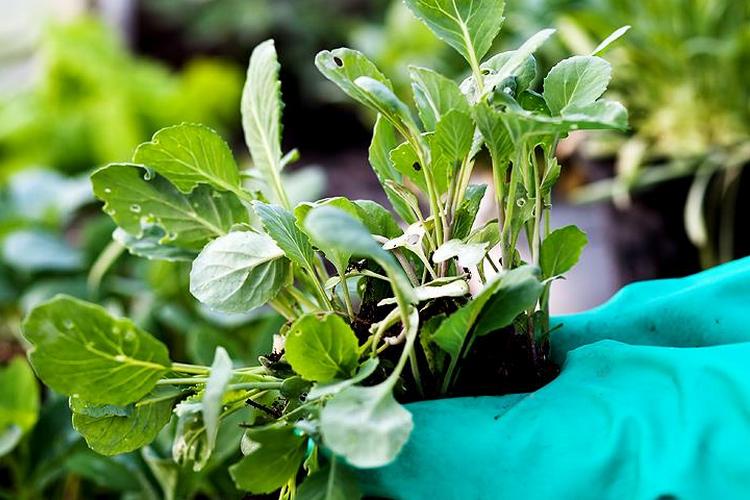

You can check the pathogen by sowing Peking cabbage. If it is present in the soil, after 40 days the leaves will turn yellow, the plant will begin to wither.
For preventive purposes, before mixing the components, it is better to spill peat and soil with boiling water and dry it. So you can protect young plants from various pests. As for heating, it can be used, but the beneficial bacteria will also be killed, which will negatively affect the absorption of nutrients.
There can be any container for seedlings. The main thing is that the volume is not small, otherwise the earth will dry out quickly. Drainage holes are required - white cabbage does not like stagnant water. In recent years, cassettes with 4x4 or 5x5 cells have been popular. Thanks to them, you do not need to thin out the seedlings and it is easier to dive the cabbage. Any containers should be disinfected with pink potassium permanganate solution or a suitable fungicide prior to use.
When different types of cabbage are planted for seedlings
Other types of cabbage assume different ripening times from white cabbage varieties. Accordingly, they should be planted at a different time. In this case, there are also clearly formed recommendations of manufacturers and amendments for the region.
Cauliflower
Cauliflower is much more demanding in terms of temperature conditions. At the time of the appearance of the ovary, the air temperature should be at least 16–20 degrees and without serious changes. Otherwise, the entire crop will die.
Such thermophilicity shifts the timing of planting seeds to a later period. Moreover, they also depend on the type of culture:
- Early. Early varieties are sown in early to mid-March.
- Average. Mid-season varieties are planted in the first two weeks of April.
- Late. This type is sown for seedlings at the end of the second week of May.
Broccoli
When planting broccoli seeds, it should be borne in mind that the seedlings reach the desired condition in a month. Accordingly, by this time, gardeners are already ready to plant a crop in open ground.
To guess the temperature, sow broccoli seeds in mid-March. Every 15 days, seeds can be added to the planted area. This will improve germination. When implementing several runs, the final batch is sown no later than the last ten days of May.
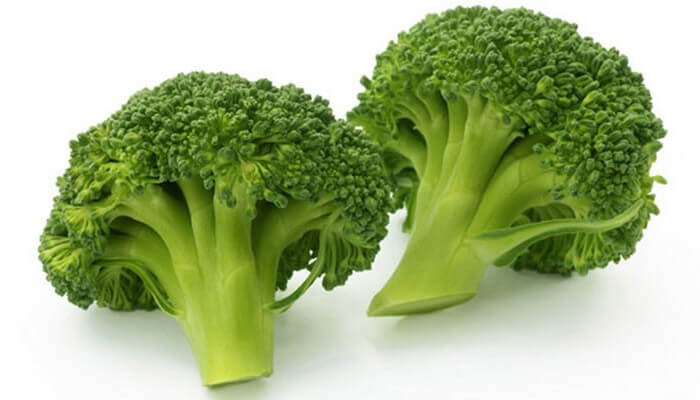

What does broccoli look like?
Beijing and kohlrabi
Such types of cabbage as Peking cabbage and kohlrabi are quite exotic for Russia. But in certain regions they are grown. Seeds are sown to obtain seedlings of such crops starting from the second week of March.
When planting, it should be remembered that 3-4 weeks pass after sowing until transplanting into open soil. The total maturation period for the heads is 90 days.
Seedling problems
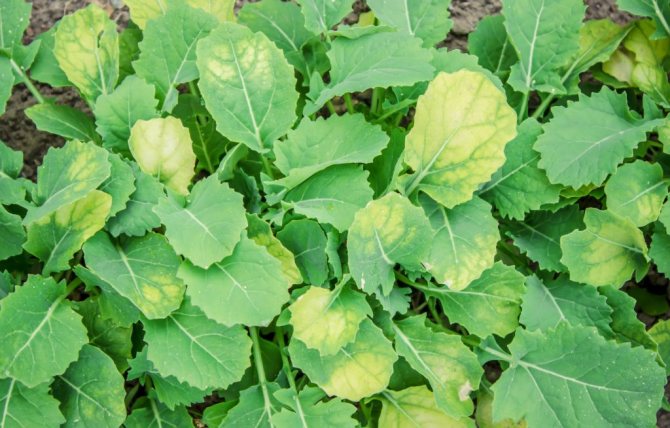

When growing cabbage seedlings, you can encounter various problems. When the first signs appear, rescue measures must be taken. Naturally, in order to save your harvest, you need to know what to do and in what case.
Seedlings turn yellow
There are several reasons for this condition. Very often, yellowness appears from a lack or excess of nutrition:
- if there is not enough iron, then the leaves turn yellow all over the base;
- with a lack of phosphorus, yellowness appears on the lower side, and castings can also turn purple;
- the lack of potassium is manifested by the yellowness of the tips.
It is possible to correct the deficiency of trace elements by feeding the appropriate formulations. When overfeeding with fertilizers, the leaves can also turn yellow, in this case the plants must be watered abundantly with water so that it flows freely from the containers with seedlings.
Sometimes the addition of river sand becomes the cause of yellowness. With it, sometimes heavy salts fall into the ground, which can poison the root system. Transplanting into new soil will help, the roots must be rinsed with water.
Another reason may be an infection trapped in the ground with poor-quality seeds.
The seedlings are rotting
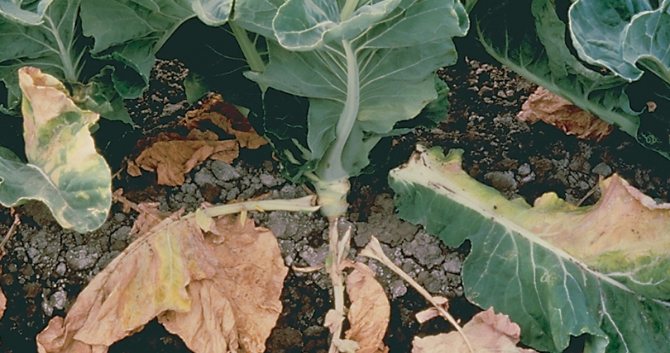

The most common cause is a fungal infection - black leg. The pathogen may be present in the soil if it has not undergone preliminary disinfection. The disease is actively developing against the background of high humidity, excess nitrogen and high acidity.
Plants rot at the base and fall. All affected seedlings must be removed, and the soil must be treated with a solution of potassium permanganate (for 10 liters of water 3-4 grams of the drug).
Seedlings are pulled
The reason for this is non-compliance with growing conditions. The plant can stretch out due to lack of light and non-observance of the temperature regime. The premises should be ventilated, the temperature should not exceed +15, and the duration of daylight hours should be 14-16 hours.
It is worth noting that cabbage can also stretch out due to the high seeding density, since individual sprouts simply need to fight for light. Experienced gardeners recommend planting seeds in separate containers at home.
Diseases and pests
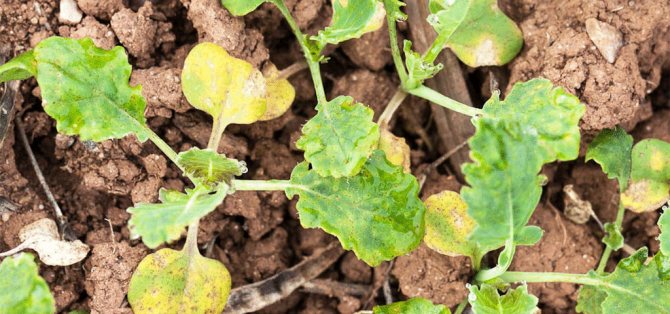

In addition to black leg, a common disease that affects cabbage is phomosis. This is another fungal disease that spreads by seeds. Therefore, before planting, it is important to treat them with a weak solution of potassium permanganate or hot water. With the defeat of phomoses, black blotches appear on the vegetative part. Unfortunately, it will not be possible to save the seedlings - the sowing is carried out again.
But the root system can hit the keel. Young plants cannot receive food and die. The affected shoots are removed, and the soil is treated with charcoal or ash. Most often, cabbage, planted on acidic heavy soils, suffers from keels.
A cruciferous flea is a danger to seedlings, which can destroy plants. In order to prevent planting, they are treated with Intavir solution.
Growing cabbage seedlings is a simple process, but in order to achieve a positive result, namely to get a beautiful strong planting material, you need to make an effort. It doesn't matter where you live (in Russia, Belarus or Ukraine), you need to choose the right sowing date and provide proper care.
Basic rules for growing cabbage seedlings
Having decided when to sow cabbage seeds for seedlings, you should also figure out the issue of the correct procedure. In addition, young crop shoots also require special care. Without proper attention to these points, even cabbage planted on time will not bring the expected harvest.
Ground requirements
Almost all the nutrients necessary for growth and development, cabbage takes from the soil. Therefore, special requirements are imposed on the soil for seedlings. It is prepared by mixing the following ingredients:
- land with turf - half a bucket;
- sand - half a bucket;
- ash - 8-10 tablespoons.
When picking up land, you should not take it from where cabbage, horseradish, radish or other cruciferous crops grew before. They are characterized by the same diseases, the causative agents of which can live in the ground for years.
After preparing the parts, they are thoroughly mixed until smooth. Then the soil is spilled with boiling water, dried, sieved and well loosened. Such procedures will allow you to disinfect the soil and fluff it up for better moisture passage.
It is also recommended to treat the soil with a solution of potassium permanganate. The liquid is prepared based on the proportions of 0.02 mg of the substance per liter of water.
Reference. To simplify the task, many summer residents buy special soil in stores. Seedling soil is sold in bags. It is already balanced in composition, acidity and other parameters.
Planting tanks
As for the containers in which you can grow strong seedlings, there are many options here. Each of them has its own advantages, disadvantages and peculiarities of growing plants. The most popular are:
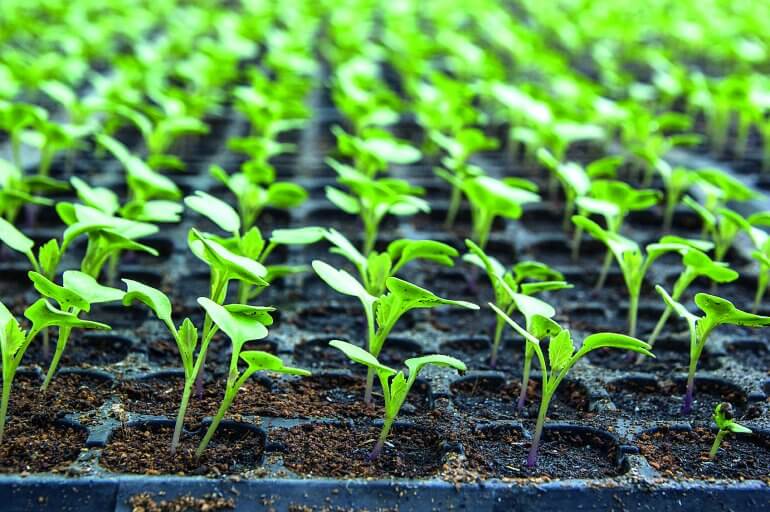

Cabbage seedlings in containers
- Plain plastic cups. Such containers are popular due to their low cost. In addition, it is much easier to care for the seedlings in such a container, and the roots are not damaged during transplantation. In addition, the cups can be used for several years. But it should be noted that before use, drainage holes are necessarily made in them.
- General plastic boxes. The seedlings planted in them feel quite well with drainage. Also, such a container is convenient for transportation and can be easily collected at home. Of the drawbacks of the box, the high probability of damage to seedlings during planting or transplanting into the ground should be highlighted.
- Special peat tablets. Such a container for planting, after soaking, swells in a peat ball in a shell. The seed is sown directly into it. Among the advantages of the tablet is the absence of the need to remove the seedlings from the container before planting. Over time, in the open field, the container dissolves itself.
- Plastic cassettes. Such products are made specifically for growing seedlings and offer different capacities. The seed is planted in separate cells, interconnected by thin plastic joints. Such cassettes are convenient to use, since the required number of cells can be easily cut off with scissors. In addition, removing one seedling does not damage the roots of the rest. But since thin plastic bends a lot, carrying full cassettes is extremely difficult without an additional pallet.
Reference. More budget options are regular glass jars, paper egg trays, and even whole eggshells. But whichever option is chosen, the features of its use should be strictly observed.
Preparing cabbage seeds for sowing
Another condition necessary for good germination, rapid growth and development of seeds is their correct preparation.
The process of preparing cabbage seeds consists of the following stages:
- Sorting. From the total mass of the seed, damaged, rotten, excessively large or small particles are selected. This will help increase germination.
- Disinfection. The seeds remaining after sorting are folded into cheesecloth, folded several times. Then the cloth with seeds is folded several more times and immersed in water heated to 50 degrees for 10-15 minutes. After the procedure, the bundle is taken out and immediately transferred to a container with cold water for a couple of minutes.
- Soaking. After the gauze is removed from the liquid, it is placed in the same form in a dark place, making sure that it is constantly wet for two days. This procedure will ensure the swelling of the seeds and accelerate the sprouting of the sprouts. At the end of the specified period, the seed is thoroughly dried.
- Top dressing. To improve growth and increase the percentage of germination, seeds are also soaked in special stimulants. An example of such a composition is the drug "Epin". A solution is prepared from it with proportions of 3 drops of the product per liter of water. Seeds in gauze are soaked in such a liquid for 2-3 hours.After that, they immediately carry out sowing in the ground.
It is worth noting that the implementation of all these procedures is necessary mainly for seeds taken from the hands. If the seed was bought in a store, you should carefully study the packaging and find out what stages of preparation it went through. Seeds completely colored in different colors do not need processing. It is useful to soak a seed without coloring for a couple of days before planting in gauze with warm water.
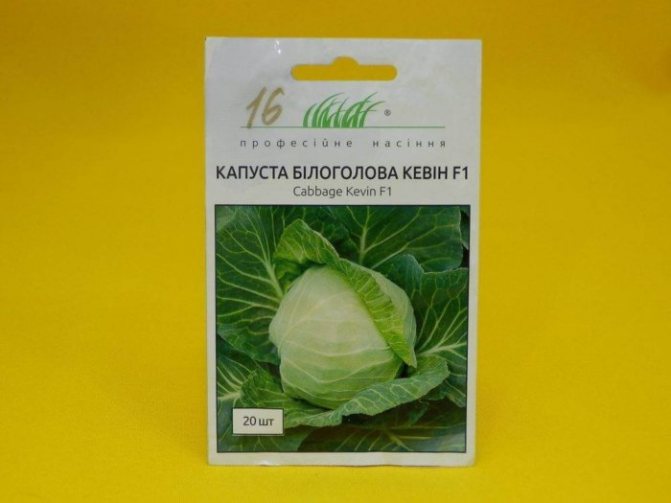

Seed material
Seed sowing scheme for seedlings
For the full development of a cabbage sprout, it is necessary to constantly absorb moisture and the necessary substances from the surrounding soil area. At the same time, a certain nutrient area should be free around it. Depending on the culture, it determines the distance between the seeds during planting.
The optimal seeding pattern depends on the planting method used:
- When planting in rows, the following measurements are followed: the distance between the seeds is 1.5 cm, the distance between the rows is 3 cm.
- In the case of sowing with a solid carpet in a box, the 2x2 scheme will be relevant, that is, each seed in the longitudinal and transverse rows is 2 cm away from the neighbors.
This scheme is most suitable for planting a crop. If the cabbage is sown denser, then the seedlings will interfere with each other. This will lead to the fact that they will either lag behind in development, or will be excessively stretched upward, which will also harm further yields.
Sowing and care of seedlings
If the summer resident is tuned in to the mandatory picking of seedlings, then it will be enough to scatter the seeds into a common box, taking into account the recommended scheme. If there is a suitable container, the dive can be lowered and the seeds can be planted in separate containers.
The sowing process itself is carried out according to the instructions:
- The prepared earthen mixture is poured into the prepared container. The depth of the lump of soil must be at least 4 cm.
- The surface of the earth is abundantly moistened with water and wait until all the moisture has gone deep into the soil.
- When using a box and a 1.5x3 scheme on the surface of the earth, at a distance of 3 cm from each other, rows are made along the entire length of the container. Their depth is 1 cm.
- Seeds are placed in rows at a distance of 1.5 cm from each other.
- From above, the grooves are carefully covered with the remnants of the earthen substrate.
- Water is sprayed over the sown area so that it does not wash out the grooves.
After seeding, the box is set aside in a prepared corner with good daylight. The recommended temperature in the seedling room is 17–20 degrees.
Subject to the sowing rules, the first shoots appear within a week. They also require certain care, which consists of the following points:
- To prevent the sprouts from stretching out, the temperature is lowered to 10-12 degrees.
- Daylight hours should last about 12 hours. If it gets dark early and there is not enough light, you need to buy and use a special phytolamp.
- Watering is carried out as the soil dries up at the base of the stem. In this case, the water should be settled and warmed up to room temperature. To improve aeration and moisture transfer, the top of the soil is often loosened.
- A week or two before planting, the mature seedlings are hardened by taking the box out into the street. The first "walk" should last an hour. With each subsequent day, the time increases.
Top dressing is carried out by diluting 4 g of superphosphate, 2 g of nitrate, 1 g of potassium-based fertilizer in a liter of water. The procedure is carried out when two leaves appear, a week after the pick and 2-3 days before transplanting into open ground.
In peat tablets
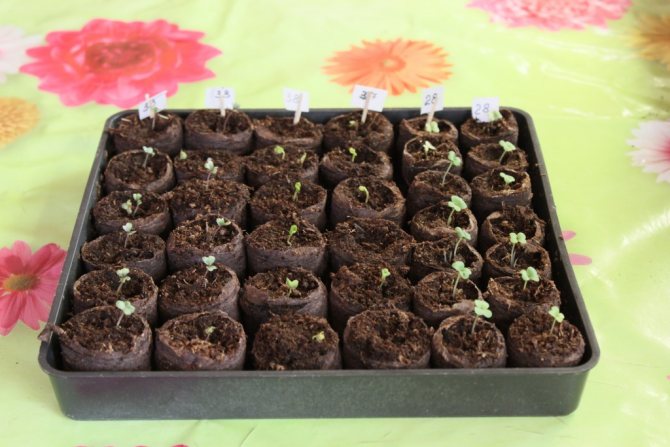

Peat tablets are convenient both for inexperienced gardeners who are afraid to damage the roots of seedlings when diving, and for savvy ones. Compressed peat, trace elements and nutrients provide the plants with the necessary environment, freeing them from the need to feed seedlings up to planting them in the garden.
Cabbage sits in tablets with a diameter of at least 4 cm.Before sowing seeds, you need to prepare them. The tablets are placed in deep containers and filled with warm water. The volume should increase 7-8 times. After swelling, the water is drained off. And two grains are laid in the recesses in the tablets. Sprinkle the seeds with peat. After that, the containers are stored in a light and warm (temperature 18-20 ° C) place until the first shoots appear.
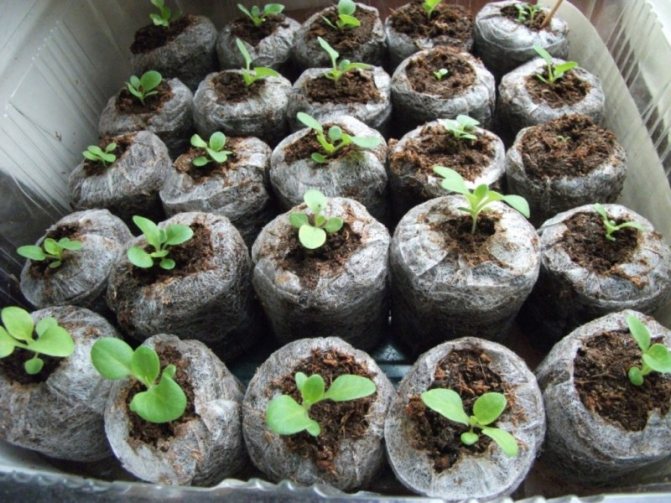

When shoots appear, culling is carried out. Each tablet is tested for weak and strong seedling. Weak ones are cut to the root - the procedure for each cell is carried out individually. In no case should it be pulled out, pulled out, as there is a risk of damage to the rest of the seedlings.
Tablets are sold in individual nets, which are impregnated with fungicides, which makes it possible to protect seedlings and seedlings from fungal diseases. If the roots start to go beyond the grid, do not worry: just transplant the seedlings in this form into a pot or cassette.
When to plant cabbage seedlings outdoors?
If all recommendations are followed, after 60–65 days from the moment of sowing, the mature and hardened seedlings are ready for planting. In some cases, this procedure can be delayed for another 5-7 days. An indicator of the readiness of cabbage for planting is the appearance of at least 4 full-fledged leaves on the stalk, while the open soil should warm up to 5 degrees.
As a rule, the period for planting seedlings falls in the second or third decade of May. Only a few late varieties are transferred to the garden in early June.
When cabbage is planted with seedlings, the yield of the crop is significantly increased, its resistance to negative weather conditions and diseases. In addition, this method of cultivation allows you to get vegetable yields much earlier than in the case of sowing directly into the open ground. But this approach requires the gardener to know when to sow seeds for seedlings, how to care for seedlings, when to plant. Only in this case will it be possible to fully reveal the potential of the seed.
Where to sow - there is a choice
Seeds can be sown taking into account the transplant (in a small container, dense sowing, the seedlings will then need to dive) and in portioned containers (pots, cassettes, tablets), where the seedlings will grow before transplanting to the garden.
The most convenient and easiest way is to grow seedlings in peat tablets. Fill them with water, after a few minutes you can already sow.
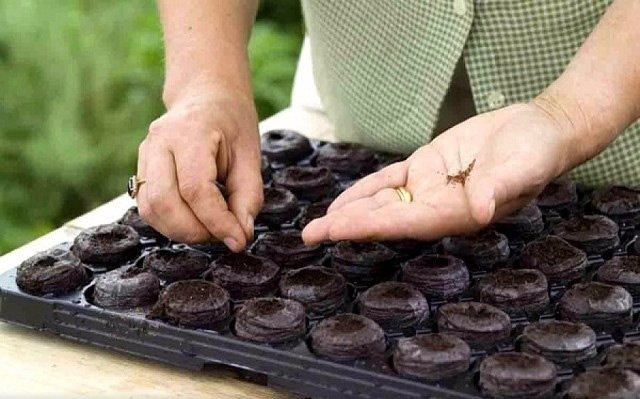

The second place in the list of popular methods of growing seedlings is occupied by plastic cassette containers. The seedlings grown in them can also be planted in the garden without damaging the roots.
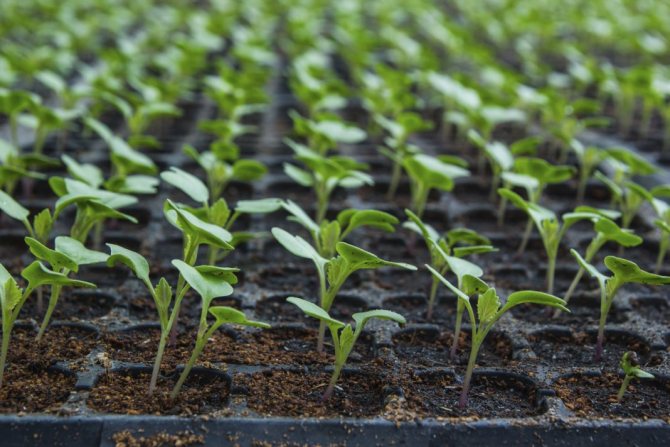

Avoiding a dive to landing in the ground
With the appearance of 2-3 true leaves, cabbage roots begin to grow rapidly, for normal functioning they need a large area. Therefore, the seedlings dive - they are transplanted into a larger container. Such a measure allows you to get a large number of lateral roots, which means that cabbage will grow better.
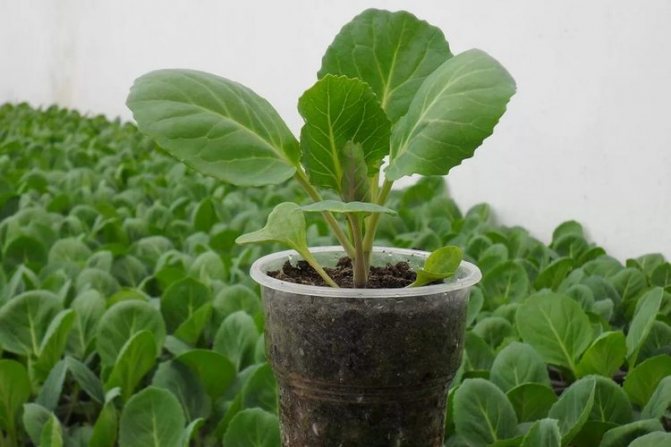

Separate cups filled with soil are used for picking. It is prepared in the same way as for seedlings. In the middle, a recess is made into which the transplanted cabbage is placed. After picking, the seedlings are watered. Closer to the day of planting, the number of irrigations and the volume of water are gradually reduced, but the soil should not dry out.
If there is an opportunity to make a temporary film shelter, cabbage of mid-season and late varieties is planted there.
Fertilizing cabbage seedlings
After the pick, no special work is done. It is necessary to monitor the condition of the soil and temperature, water on time and prevent overheating or freezing of seedlings. Loosening can be done, but with care so as not to damage the delicate roots.
At this stage, the cabbage can be fed according to the following scheme:
- The first feeding 7-9 days after the pick.
- The second one is 14 days after the first feeding.
- The third one a week before the cabbage is planted in a permanent place.
Cabbage is very sensitive to the amount of trace elements, and therefore it is better to buy ready-made preparations and use them according to the instructions. In this case, you can be sure that the seedlings will receive all the substances necessary for growth in full.
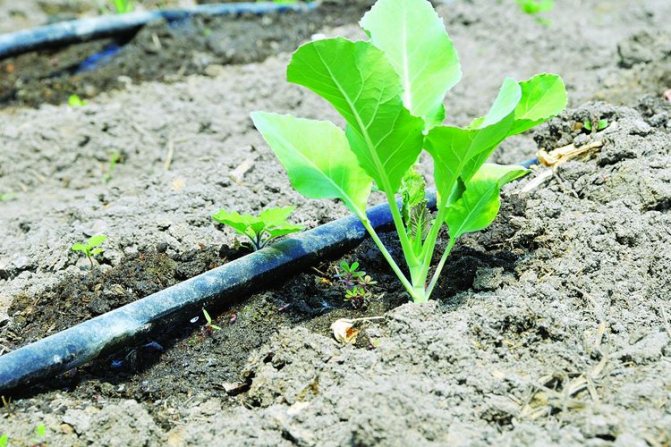

Always water the plants before applying various fertilizers, this will save the root system from chemical burns.
Hardening seedlings before planting
A sharp change in temperature can be detrimental to cabbage seedlings, and therefore you need to prepare it. To do this, about 10-14 days before the scheduled date of disembarkation, it is taken out into the street. For the first 2-3 days, it is enough just to open the window for a couple of hours, then the pots with plants are placed in a place protected from the sun, gradually increasing the duration of their stay in the fresh air.
It is important that the sun's rays do not fall on the plant during the first days, otherwise sunburn cannot be avoided.
Seedling care
In the spring, in a city apartment, cabbage seedlings are a lot of trouble. And you need to start with the temperature regime.
- First of all, seedlings must be protected from pulling. For this, after the appearance of most of the sprouts, they are provided with a decrease in the temperature regime to +10 - + 15 ° C. Seedlings are placed in an unheated room, and if you have a closed veranda, glazed balcony or loggia, then there will be no problems with cool conditions.
- Adequate lighting will also allow for strong, stocky seedlings. Daylight hours for cabbage sprouts should be 14-16 hours long, and if the spring stint on the number of sunny days, then fluorescent lamps will come to the aid of the gardener. Depending on the length of the day, the seedlings are additionally illuminated for 2-3 hours in the morning and evening.
On a note. In cloudy weather, the lamps are left on all day.
- As you know, cabbage is a "noble water-chopper", but this fully applies to adult plants. For young cabbage sprouts, both overflow and lack of moisture are contraindicated. In the first case, a plant disease with a black leg will inevitably occur, and in the second - a slowdown in the development of seedlings, and, as a result, a decrease in its quality. As a result, the gardener will receive a smaller harvest of cabbage.
Water the seedlings as the topsoil in the seedling container dries out a little.
Dive cabbage
Gardeners do not always have the opportunity to sow in separate pots and, most often, this is due to a lack of space on the windowsills. Indeed, in addition to cabbage, seedlings of peppers, eggplants and tomatoes have already been placed there.
Therefore, if cabbage seedlings are in a common container, then during the formation of the second leaf they will need to be provided with a larger area of nutrition, i.e. dive. These can be either individual cups (peat or plastic), or a larger seedling box.
Planting seedlings and leaving the first time
The place for growing cabbage is prepared in advance. The garden bed should be illuminated by the sun, be fertile. Legumes, cucumber, carrots, and green manures are good precursors for white cabbage. The crop is not doing well in the place where beets were grown last year. Also, you cannot plant cabbage in the same place for two years in a row.
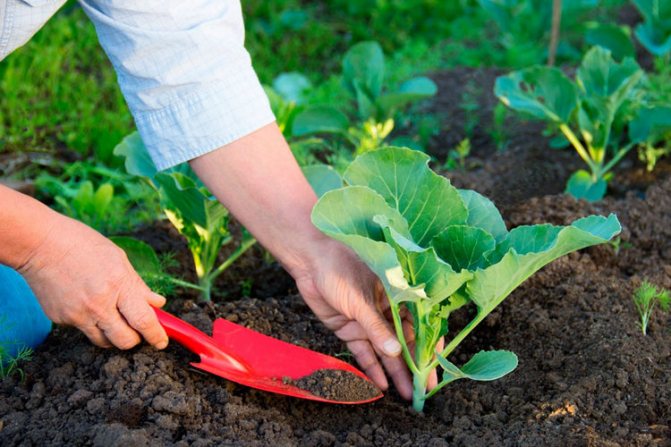

The scheme for planting white cabbage seedlings depends on the ripening time, a checkerboard pattern is used. For early cabbage, the scheme is 30-35x40-45 cm, for late cabbage - 60-70x70 cm.The depth of the planting holes is 15-20 cm.
Seedlings are planted according to the following algorithm:
- In the dug holes put on a handful of rotted chicken droppings, 2 tablespoons of wood ash.
- Spill everything with water.
- A layer of earth is poured so that the roots do not come into contact with fertilizers.
- In the evening, cabbage is planted, taken out of the cups along with a lump of earth.
- Be sure to water the next morning.
In the future, freshly transplanted white cabbage is watered every 3-4 days, a liter of water is poured under each bush. No more moisture is needed, otherwise the roots will begin to rot and die off, the work will be in vain.
A week after transplanting to a new place, the first feeding is done. For this, a solution is prepared: 20 g of ammonium nitrate and 40 g of potassium salt are added to 10 liters of water. About 100 ml of the prepared solution is poured under each plant; it should not fall on the leaves.
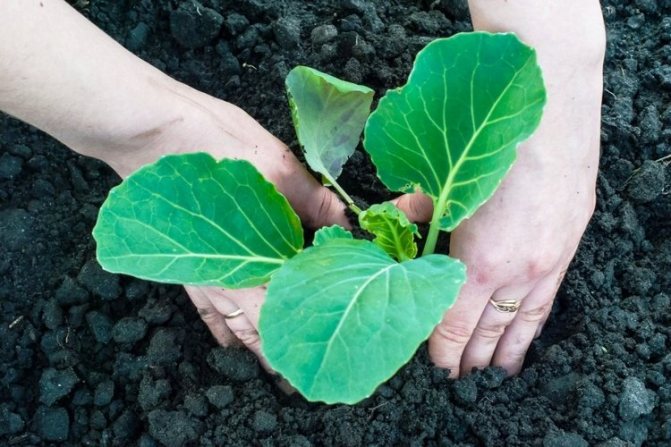

Be sure to water the beds with water before applying top dressing, otherwise the roots may burn out.
At first, cabbage can be mulched with fallen leaves, chopped grass or straw. Such a measure will help to conserve moisture and protect the root system from overheating. The mulch layer should be at least 5 cm thick.

